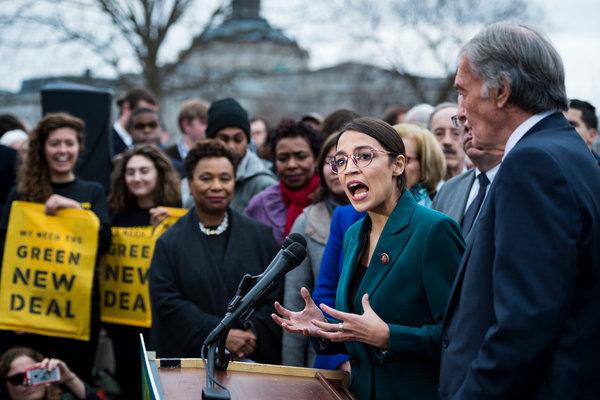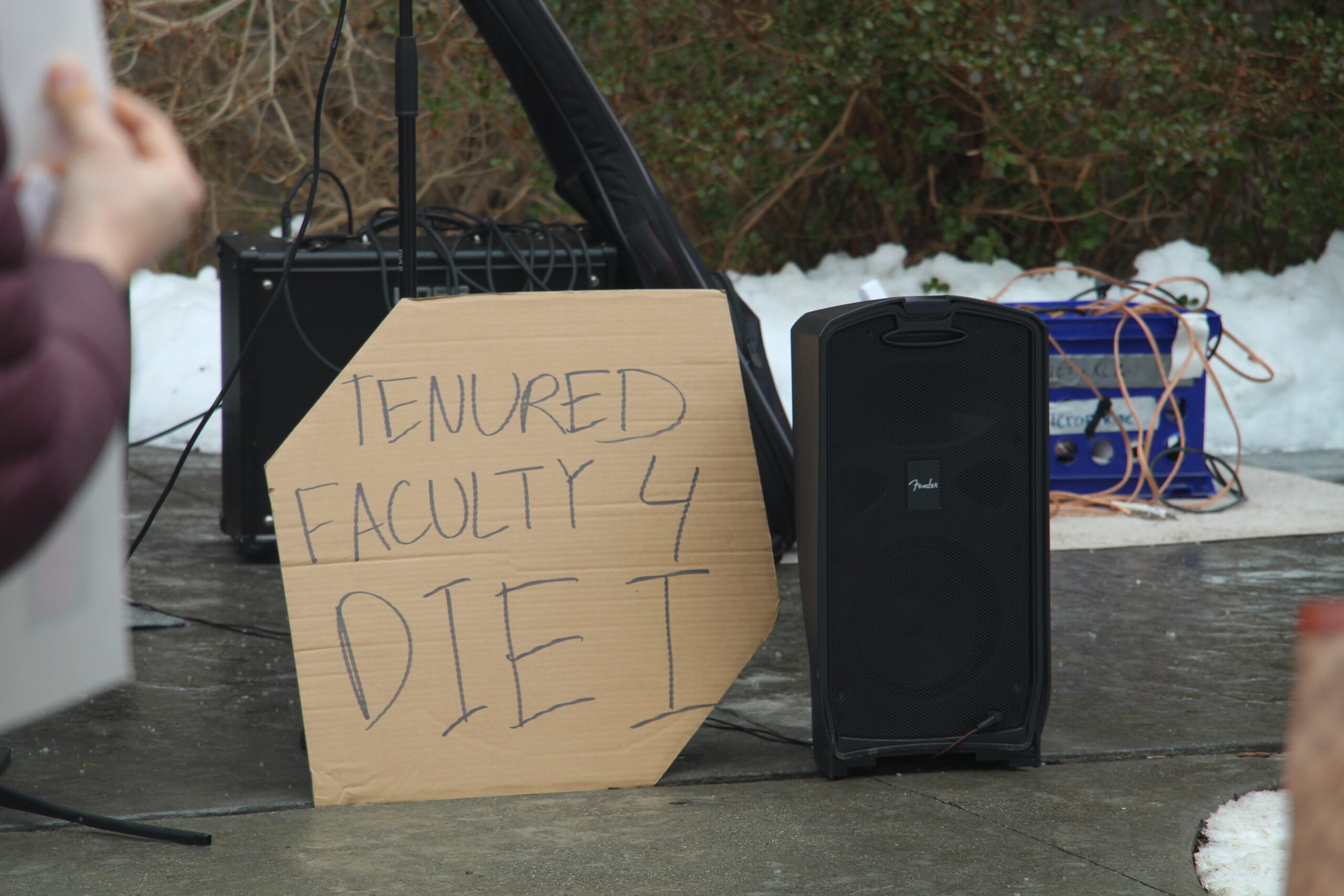In Capitol Hill lingo, AOC used to be shorthand for “Architect of the Capitol.” That position still exists. But, at least since Jan. 3, 2019, AOC means something different entirely: Alexandria Ocasio-Cortez.
Young, progressive, and whip-smart are just three of the adjectives already used to describe the first-term congresswoman from New York. AOC isn’t a naïve millennial yearning for attention. She’s the real deal and people are starting to pay attention.
During her short time in office, conservative critics have kept their eyes on what the voters really care about: her dancing skills. Nevertheless, she persists. One month into her tenure, she, alongside Senator Edward Markey (D-MA), introduced House Resolution 109 in early February. Five days later, it was referred to various committees and subcommittees where it is currently awaiting further action in the House of Representatives. AOC is the lead sponsor on what is more commonly called the “Green New Deal.”
Taking its name from FDR’s “New Deal,” the “Green New Deal” places environmental issues at the forefront of the American consciousness. It backs the almost universally held belief that climate change is real and that “human activity is the dominant cause of observed climate change over the past century.” The resolution lays out a series of goals which include net-zero greenhouse gas emissions, millions of high-wage jobs, investing in infrastructure and industry, and the cultivation of a sustainable environment for all. Under the current proposal, the resolution hopes to accomplish all this and more in just 10 years.
The Green New Deal isn’t just fluff. It highlights the inconvenient truth surrounding historically oppressed communities and pushes for equity where lacking or absent. According to the Cato Institute, a libertarian think tank based in Washington DC, FDR’s New Deal had significant shortcomings. According to a 2003 commentary, Jim Powell argues that the New Deal was not government work at its finest, but rather that “mounting evidence, however, makes clear that poor people were principal victims of the New Deal.” It punished the consumer, the exact reason the New Deal was implemented. Jobs were created by New Deal spending, says Powell, but “we cannot see jobs destroyed by New Deal taxing.”
AOC’s New Deal hopes to address those very problems. Louis Hyman wrote for The Atlantic that “if we are going to fund a Green New Deal, we need to acknowledge how the original actually worked.” The architects of the Green New Deal understand this challenge, methodically reviewing the shortcomings of the original New Deal while making as many assurances that history doesn’t repeat itself.
Whether the bill accomplishes its goal of filling in the holes created by the New Deal isn’t the only barrier to its passage in committee. It must endure intense scrutiny to determine its feasibility. Conservatives and some progressives alike bash the resolution for being too broad and for “including wish list items not directly related to climate change.” Before the Senate voted on whether or not to allow debate on the bill, one of the co-sponsors, Senator Chris Murphy (D-CT), said he expects “almost every, if not every” Senate Democrat to vote “present,” allowing them to avoid taking a formal position on the resolution.
The measure, if passed along to the House of Representatives, would most likely pass simply because the Democrats are in control. But even its future there is uncertain because Speaker Pelosi has not committed time for a hearing regarding the measure. As predicted by Senator Murphy, it had no such luck in the Senate.
March 26 marked the appearance of the Green New Deal on the Senate floor. In a significant blow to supporters of the resolution, it failed to garner the 60 votes necessary to take up the resolution. Four Democrats voted against the measure with the other 43 others voting present.
On the surface, AOC’s Green New Deal is exactly what this country needs. It will address the growing inequalities facing millions across the country. It will and already has brought the environment into the minds of Americans, which is sorely needed. They are noble pursuits in their own right and the bill should be commended for its efforts to eliminate many of the New Deal’s biggest problems.
Where the resolution fails, however, is in its scope. Its goals are laudable, but a 10-year rollout seems unrealistic and overly optimistic, especially when one reads the bill. Even though it leaves much, if not all of the policymaking to later administrations, the proposal is aspirational. It lends too much credit to the sensibilities of our politicians.
The problems multiply the deeper one looks at the resolution. Even if the goals were slightly more realistic, attaching AOC’s name to anything immediately becomes political fodder for conservative and right-wing pundits. A huge swath of the American public is instantly turned off to the resolution for that reason alone. Here, as in most policies, moderation is key and bipartisanship is a must if we want long-term solutions.
To be clear, I have nothing against aspiration. Senator Kirsten Gillibrand (D-NY) holds it in just as high a regard as I do saying, “We don’t know if we can get to net-zero carbon emissions in 10 years, but we should certainly try.” With the White House doing whatever it can to halt environmental reforms, Republicans and centrist-Democrats benefit from significant political cover in opposing the Deal. No matter how righteous the issue of climate change may be, all efforts seem insignificant in the face of fierce resistance.
Even in the crowded 2020 Democratic field, only two have the environment as their number one issue and only a handful have it in their top three. The two: Jay Inslee, Governor of Washington, and John Hickenlooper, Governor of Colorado. Inslee is essentially running a one-issue campaign on the back of climate change. Unfortunately, the environment isn’t sexy. No one cares enough about climate change solely to elect someone based on their environmental credentials. The environment certainly deserves more attention than that. But, the American populace has spoken and want immigration reform, healthcare reform, and economic policy.
For each strength, there is a glaring weakness. For each ambitious goal, there is a skeptic. I admire the new Congress for even attempting to tackle such an issue, but an attempt is not action. The Green New Deal has merit and it should be taken seriously as a building block upon which future legislation can be built. Yes, we do need a Green New Deal. Just not this one as it is written.
I do hope something comes of this version of the bill but I am, uncharacteristically, pessimistic about its prospects. So, I’ll take a cue from our nation’s leaders and do what has become the norm in our politics. I choose to punt on the issue at hand, hoping something else will come up and provide me cover. With an acute and biting sense of hypocrisy, I vote present.










